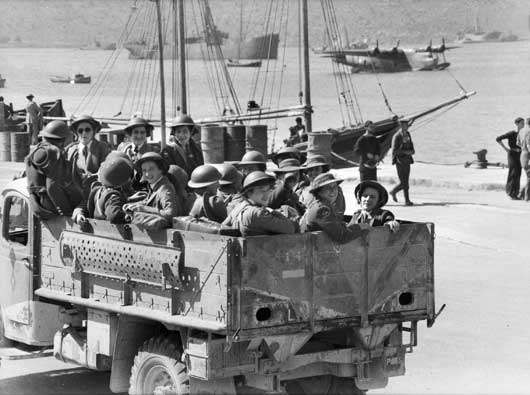Crete Defeat in Crete, 1941
The Battle in Brief
Crete, the largest and southernmost Greek island was strategically located in the eastern Mediterranean. Many British, Australian and New Zealand troops evacuated from Greece in April 1941 were landed at Crete while others were sent to Egypt. By mid May the 30,000 strong British garrison on Crete included 6,500 Australians. In addition, there were 10,000 mainly untrained and poorly armed Greek troops on the island.
On 20 May, Germany launched Operation Mercury, an airborne invasion on the island. This was the first invasion involving large numbers of airborne troops. German paratroopers and glider-borne soldiers descended upon Crete at Maleme, Retimo, and Heraklion airfields and the naval base at Suda Bay which were all situated on the northern coast of Crete. In the first 24 hours, the Germans suffered appalling casualties and captured none of their objectives.
At Retimo and Heraklion the Australian and British defenders kept the invaders off the airfields. But at Maleme, a mistaken withdrawal of a New Zealand battalion on the night of the 20th was exploited the next day by the Germans who captured the airfield and were able to bring in the reinforcements they needed to defeat the allies. On 27 May, the decision to withdraw from Crete was made and the defending troops made their way to the south coast. About half the British force, including 3000 Australians, were evacuated by the Royal Navy which had played an important role from the opening of the battle. Three British cruisers and six destroyers were lost in the Battle for Crete including HMS Kashmir among whose survivors was Ordinary Seaman Ian Rhodes, RAN, the highest decorated Australian seaman and only Australian recipient of the naval Conspicuous Gallantry Medal. Australian casualties on Crete were 274 killed, 507 wounded and 3,102 taken prisoner.
Location
Media







